Our review scores out of 10 for the James Cameron MasterClass:
Lessons – 9.5/10
Workbook – 7/10
Community – 7/10
Value – 10/10
Overall Verdict – Two thumbs up!
Who is James Cameron?
- James Cameron is one of Hollywood’s biggest-ever directors, heralding a number of cinema’s greatest blockbusters and holding some of the largest box office grosses of all time.
- He is best known for The Terminator (1984), Aliens (1986), The Abyss (1989), Terminator 2: Judgment Day (1991), Titanic (1997) and Avatar (2009).
- To ask, “Is James Cameron the Greatest Filmmaker?” is subjective, of course. But in terms of box office receipts, James Cameron’s place is relatively unchallenged. As of early 2021 Avatar has retaken the title of the world’s largest grossing film of all time.
- Cameron is no stranger to awards ceremonies either. To name but one, at the Academy Awards in 1998 Titanic received fourteen nominations and won eleven, including Best Picture, Best Director, and Best Film Editing.
What is MasterClass?
MasterClass provide online classes from a variety of well-known talents, covering a diverse range of topics that give advice, provide lessons to improve, or simply inspire.
The lessons are carried out in multiple short videos all of which are easy to access and resume at any time. You can watch them all in one go or pick them up here and there.
They are engaging and easy to understand, with the website keeping track of your progress to ensure accessibility. As well as providing videos, there are also workbooks that encourage participation and further the lessons taught.
James Cameron MasterClass Pros:
- The James Cameron MasterClass is an excellent resource with the added bonus of a relatively low price tag.
- The lessons are simple to ease into, given Cameron starts off with background and then sails into the heavier course work which involves story and filmmaking.
- You can watch the lessons anytime, anywhere. The content is available online and on mobile devices. And although there are assignments, if you choose to do them, these are to be completed at your own leisure.
James Cameron MasterClass Cons:
We were quite taken with this MasterClass. Any cons that go with it really do feel like nitpicking. However…
- The one area the MasterClass doesn’t really go into is the element and use of sound in film.
- Furthermore, while the Workbook is enjoyable and includes additional information it lacks is a more in-depth recap of the James Cameron MasterClass and consequently feels a little detached from it.
- And if you’re a screenwriter, the depth of detail on the filmmaking process can perhaps feel a little alienating. It certainly skews more towards filmmaking craft than screenwriting craft.
The James Cameron MasterClass
James Cameron has twenty-three credits for film direction and forty-two credits for production. This goes along with a host of additional credits in editing, visual effects, art, scriptwriting and continuity development. This versatility makes him one of the all-time Hollywood powerhouses.
Cameron tells us what sets him apart from other directors, in that, for one thing, he can write his own scripts, draw/sketch, and produce the storyboards for his projects. This self-starter nature is clear from the outset and it’s inspiring to watch.
In fact, one of the excellent parts of this course is how Cameron teaches us about writing and producing, and working with storyboards. Not all directors do this within a production and so Cameron’s insight into this process is unique and invaluable.
James Cameron MasterClass – The Lessons
The James Cameron MasterClass consists of fifteen lessons. Lessons range in length from eight to nineteen minutes.
The class runs for a total of three hours and twenty minutes. It’s long but you can go at your own pace and this is perhaps even advisable, such is the intensity of the experience.
Lesson 1 – Meet Your Instructor: James Cameron
The first class begins with an empty chair in the center of a green-screen set. This amplifies the drama as Cameron begins to speak in VO. Following this, action-packed clips from the films he will be dissecting throughout the lessons, appear on the screen.
Continuing in VO, Cameron advances a philosophy of a dream world or alternative reality from which ideas are born. This is a philosophy he returns to throughout the lessons.
Cameron appears on screen and talks about his early attraction to film:
- As a child, the film Mysterious Island (1961) had a particular effect on Cameron. He would make his own comics at home based on the characters (in a fan-fiction style).
- Within these comics, Cameron says he began to unconsciously draw wide shots, closeups and reverse angles, totally unrelated to the idea of filmmaking.
- 2001: A Space Odyssey (1968) had a “visceral” effect on fourteen-year-old Cameron and was the first time he thought of film as art.
- Wanting to know more about the film, fourteen-year-old Cameron bought the book The Making of Kubrick’s 2001.
- He studied the book in great detail, made notes, and wondered how he could make a film like 2001: A Space Odyssey.
- After this, he began to experiment with film.
Additionally, Cameron talks about the importance of absorbing everything in the quest to become a filmmaker and to quite literally become a sponge. This is because filmmakers stand “on the shoulders of the filmmakers that went before.” And filmmakers produce new work and aesthetics through their own personal filters.
“You are constantly humble before the craft.”
To close this class, Cameron says that he wishes to impart to the students his knowledge of how to make a low-budget production.
Lesson 2 – Pursuing and Developing the Idea
Lesson 2 of the James Cameron MasterClass contains seven topics: Pursue the Idea That Won’t Go Away, Harness Your “Zero-Cost Subscription Service,” Develop the Story, Your Own Way, Three-Act Structure: Know the Rules, and Break Them, Authenticity as Your Anchor, Never Forget Your Principles, and Express Your Perspective Thematically.
In Pursue the Idea That Won’t Go Away, Cameron examines the factors that push a person to tell a story such as a character, a world, a problem, or inspiration derived from the work of others. Moving forward from this, and taking character as an example, he looks at how we can work with different ideas in a who, what, where, when type of exercise.
The aim of this exercise is to work on the factor until it begins to resonate. And when it resonates the factor begins to draw from the world and fill itself in, so to speak. This is the time when you sit down and write.
Another interesting topic is Harness Your “Zero-Cost Subscription Service” where Cameron discusses how The Terminator grew from a surreal dream image.
The following topics flow directly into writing and story structure.
While Cameron is a Swiss Army knife filmmaker (writing, storyboarding, directing), he understands that some directors do not write. However, he believes that directors need to understand how the writing process works and how to work with writers.
Cameron explains that we have to know the rules of story to be able to communicate with writers in a writer’s room about, for example, story structure. The Terminator is an example of a five-act structure which also includes a coda. And it would be difficult for a writer to explain this to a room of film professionals if they do not know the basics of a midpoint or act transition.
Closing this James Cameron MasterClass lesson is the topic Express Your Perspective Thematically, which is both interesting and inspiring. Cameron explains that all of his film themes are filtered through his personal perspective of existence. This feels like tangible advice, encouraging screenwriters to connect with their inner selves and what stories they wish to tell.
Lesson 3 – Toying with the Audience: Building and Releasing Tension
There are three topics in Lesson 3: Honor Your Relationship With The Audience, Increasing Jeopardy: Build and Prolong Tension, and Building Tension Across An Entire Film.
Lesson 3 is by far one of the most engaging in the James Cameron MasterClass so far.
An audience creates a social contract with the filmmaker. In this contract, the audience becomes passive to the dominance of the experience of the film. So the filmmaker should respect that contract. In essence, the filmmaker respects the audience’s passive consciousness by producing content that is neither too simplistic nor too complex.
- A surprise should produce satisfaction through a well-laid payoff, such as the setup and payoff in Aliens where Ellen Ripley fights the Alien Queen.
- When a writer/filmmaker creates satisfying setups and payoffs it creates tension and a promise to the audience.
- The tension gives the audience a “sense of wanting to be involved.”
- This creates an interactive experience as the audience’s mind wonders which way the film could go or end.
This can be played on too. A character can go through a difficult situation that the audience does not expect, but if the character ends up where the audience wanted them to end up, it creates an unexpected payoff.
Writers should go through their scripts and ask questions so that they can improve:
- What am I giving the audience here?
- What expectation does that create?
- How am I paying that off?
- How do I work against an expectation and earn a payoff for the audience?
The topic Increasing Jeopardy: Build and Prolong Tension coupled with scenes from The Terminator is an exciting way to learn about filmmaking.
This section begins by describing the element of jeopardy and how to create it on film.
Time is a factor in jeopardy. In believing that the moment of jeopardy will arrive in seconds, rather than hours, the audience becomes invested in the outcome.
“Tension is an art, and it’s a discipline.”
But jeopardy arriving alone is not enough. The audience needs to:
- Appreciate the character.
- Have been brought in subjectively through journeying with the character.
- Know enough about what the character is about to face.
Another method to indicate rising jeopardy is through crosscuts.
- Use crosscuts to escalate a situation and create frustration, this holds the audience’s attention.
Cameron uses Ginger Ventura’s death in The Terminator as an example of using crosscuts to enhance the sense of jeopardy and suspense.
The final section of Lesson 3 deals with building tension across a whole film.
Cameron uses Titanic as an example. Initially, in an early scene, Captain Smith receives an iceberg warning, does not heed it, and informs the passengers that the ship will be speeding up. Later in the film, new tension is created when the Titanic hits the iceberg and people scramble to stay alive.
There’s a strong sense of craft in this section overall and the detailed analysis of specific examples is fantastic. Cameron gives specific advice and then explains it with specific examples. This is great teaching and a great opportunity to watch great cinema in action with a fresh understanding of what is making it tick.
Lesson 4 – The Terminator Club Scene Breakdown: Converging Storylines and Relentless Tension
Lesson 4 is one of the longer style lessons and covers one topic: Converging Storylines.
The Terminator is an example of how a writer/filmmaker can use structural motifs and film techniques to create relentless tension.
In Act I of The Terminator:
- In a “third-person, omniscient way” we follow three storylines.
- The storylines have a sense of convergence: Sarah Connor goes about her normal routine; the Terminator arrives and searches for Sarah Connor; Kyle Reese acts in a manner like the Terminator i.e. arrives in the same fashion from the future, finds weapons, stalks Sarah Connor.
“So we’ve just started the clock on our chess move … and the audience knows it.”
Like the breakdown of the scene of Ginger Ventura’s death, Cameron strips The Terminator club scene down to filmmaking elements.
Here are the highlights from the club scene:
- The ticking clock of rising jeopardy and tension begins when the Terminator arrives at the same nightclub as Sarah, ratcheting it to a new level.
- All of the implanted film techniques such as slow-motion, music, crosscuts, etc. create dread in the audience.
- Cameron wanted to suspend the audience in dread “to continue to feel that grit.”
- The audience enjoys feeling an emotion such as dread, or to laugh etc.
- There is another escalation as Sarah discovers Kyle Reese is in the club.
- The characters finally converge in a flurry of split-second crosscuts.
- In the nick of time, the Terminator is blown away with six blasts of Kyle’s 12-gauge.
- When the Terminator stands, a low angle is used to show the Terminator as gigantic, powerful, and unstoppable.
Again, this makes for fascinating teaching. It’s a joy to watch such expertly crafted filmmaking broken down and the quality of the breakdown is an asset that isn’t always easy to find.
Lesson 5 – Aliens Egg Chamber Breakdown
In this lesson, there is one topic: Fulfilling the Promise of a Nightmare.
How do you identify a feeling and show that to the audience? An interesting and inspiring technique follows:
- Cameron imagined walking into a dark room where the walls were covered by wasps.
- There was no way to get to the exit of the dark room.
- This experience/feeling of the wasp-dark room was mapped onto the first meeting of Ripley and the Alien Queen.
The lesson continues to cover how Aliens is amplified through slow motion, shaky cameras, special effects and crosscuts. It’s a visceral explanation of visceral cinematic emotion.
Again, this is helpful and actionable advice for screenwriters and filmmakers alike. Cameron makes it personal and in this, the viewer is encouraged to think about their own personal perspective.
What feelings do you have and how can you match that through cinematic storytelling? Capturing a feeling on the page and screen is the essence of cinema. And again, by giving a clear example, Cameron makes this an approachable task.
Lesson 6 – Aliens Newt Introduction Scene Breakdown
Lesson 6 is another of the compelling scene breakdown lessons. It contains one topic: Turning Suspense into Curiosity.
Cameron describes how Ripley’s inner mental state is externalized and transferred to the audience.
- The scene tracks through a “haunted house” like setup.
- One of the Marines knocks over a flask and Ripley reacts in a jumpy way.
- This puts the audience inside the character.
The class continues to describe classic suspense techniques and introduces the character Newt.
Closing the lesson, Cameron imparts:
- Every shot is critical in filmmaking.
- The audience learns and when the audience discovers it is learning, they continue to pay attention.
This is a great section on how to make characters leap out and grab the audience. Again, Cameron provides a tangible and visceral example of how to turn a creative process into something applicable. His explanation is clear and gives actionable techniques to try out.
Particularly the insight into the audience learning feels revelatory. This is one of those pieces of advice, with an example given, that one can cherish and hold throughout their career.
Lesson 7 – The Art of Low-Budget Filmmaking
This lesson contains four topics: Get The Most Bang For Your Buck, Build Around Your Strengths, Use Every Trick In The Books and Invent New Ones, and 117 Setups in a Day on a Low Budget.
The lesson begins with the art of making low budget films. It outlines the key elements…
- Make sacrifices.
- Be prepared.
- Getting the best from locations versus set building.
- Selecting a crew that can produce a high-quality film.
- Working with unknown talent forces the filmmaker to work harder to earn audience interest, with the payoff of building craft.
- Choose a subject that could be made on a low budget.
“You have to be prepared to accomplish your goal in ingenious ways.”
Use Every Trick In The Books and Invent New Ones underlines the importance of a filmmaker’s relationship with a director of photography.
Adam Greenberg acted as director of photography for The Terminator. Cameron wanted a mash-up of Blade Runner (1982) and The Road Warrior (1982) for The Terminator. So the men watched these movies together. They focused on “the kinetic moving camera, wide lenses, hauling ass and following cars…” in The Road Warrior and the “film noir quality” in Blade Runner.
“Find a way to serve the story and give it some style.”
This section is one of those more useful to filmmakers rather than screenwriters. Its insights into the practicalities of making films on a low budget are certainly interesting but perhaps feel more anecdotal experience than unique insights into the creative process. It’s still fascinating stuff but not quite as creatively inspiring perhaps as other lessons.
Lesson 8 – The Terminator Arm and Eye Repair Breakdown
One topic is covered in this James Cameron MasterClass lesson: Realistic Low-Budget Practical Effects.
The Terminator special effects team developed in-house puppeteer effects for the arm and eye repair scenes.
This is a great insight into the specifics of Cameron’s process and the filmmaking process in general. It might not give actionable techniques to practice, particularly for writers. However, it serves as a fascinating insight into the script to screen process.
It’s one of those windows into the filmmaking process that cinephiles will love. The behind the scenes nature of it feels like an old-school DVD extra. This is perhaps the extent of its use creatively, inspiration and insight rather than something that you will be rushing to try straight away.
Lesson 9 – From Sketch to Spectacle: Creating Set Pieces
This lesson contains three parts: Battle for a Few Memorable Set Pieces, Previsualize to Trigger Important Questions, and Planning a Set Piece on a Low-Budget: The Future World in The Terminator.
What is the narrative purpose of a set-piece? In The Terminator, the future shows how Kyle is mentally and physically scarred and suffering from PTSD.
We move on to sketching and storyboarding. Previsualization in filmmaking is essential. Previs helps to know what to draw on the storyboard (be it a character wearing a trenchcoat or a loincloth). Previs also aids in visualizing a pre-cut of a scene, and/or aids set designers and model makers.
“It is better to have a few memorable set pieces.”
For The Terminator, Cameron describes in detail how he set about producing the initial images and ideas:
- He dressed his roommate as a soldier.
- Cameron then photographed his roommate in different poses in different locations.
- Utilizing the images, Cameron figured out what kind of lenses he would use when filming.
- He was then able to start sketching his ideas.
Filmmakers will love this section and its specific advice about how to tackle realizing images. However, it’s also useful for writers. Visualizing the story is essential to conveying the story in the best possible form.
So actionable techniques to help this process certainly make it easier to know how to do this. And what Cameron outlines he did is something anyone can do, right there and then, maybe even straight after watching the MasterClass.
Lesson 10 – The Terminator Future World Breakdown: Creating a Set Piece on a Budget
This lesson contains four topics: Creating a Set Piece on a Budget, Build Your Knowledge of Effects, Using Rear Projection and Miniatures, and Learn How to See Through an Artist’s Eye.
Early in this lesson, we look at the transition from the present day of The Terminator to the future world. As Kyle watches construction vehicles, we cut to a Hunter Killer driving over and crushing human skulls in the future.
In the original storyboard, Kyle falls asleep before the cut to the future. This suggests you do not have to stick to the storyboard.
In The Terminator future, the effects team used miniatures and front and rear screen projection.
Over six months before filming The Terminator Cameron sketched concepts and refined designs. This preparation aided over the forty-two days of shooting as he knew every shot in detail.
“It is critically important to know your film before you shoot your film.”
Additional advice in this lesson includes:
- Everything starts with the art.
- Study art to understand perspective and light and what is happening in a frame.
- Learn to draw.
- Think compositionally.
- Filmmaking is what is and is not in the frame.
- Study photography.
- Study aerial perspective.
- Observe reality carefully.
- Become friends with keen visual effects people and learn how to use programs like “Maya and Nuke.”
- Network with people at a peer level.
This is a particularly good lesson for filmmakers just starting out. It’s an insight into how to think and act like a filmmaker in daily life. How do you become a filmmaker when not actually making a film? The advice Cameron gives here provides great examples of how aspiring filmmakers can make creativity a part of their very existence.
Lesson 11 – Crafting and Introducing Compelling Characters
Lesson 11 in the James Cameron MasterClass has six topics: Craft a Very Compelling Sketch, Give an Average Person an Enormous Problem, Introduce Characters With a Creative Synecdoche, Build Towards the Moment your Characters Collide, Do Your Research for Historical Characters, and Help Actors Influence Their Character.
The lesson begins with how to create fully realized characters. In that, you need to find universalities that the audience can connect with.
“Write what you know.”
At the writing stage, a character is a sketch with no true form. The director imagines what she/he wants. The actor adds a face, a voice, movement, etc.
Empathy is created in the audience when a character is well constructed.
The development of Sarah Conner:
- Working as a waitress in Big Boy, Sarah comes from humble beginnings.
- Sarah transcends to a Mother Mary figure who is fighting for the future of the world.
- Cameron drew on all the women he knew and books he had read to write from the woman’s perspective.
- His first wife was a likeable, plucky, humorous, cynical woman who worked as a Big Boy waitress.
In introducing characters use a synecdoche, specifically like how boots are used to introduce Colonel Quaritch. Generally speaking, a synecdoche is using a part of a person to represent a whole. Like how a corporation employee can be referred to as “a suit.”
An audience has a sense of anticipation for the moment when characters meet such as the club scene in The Terminator. There is an opportunity to play with how characters meet. However, keep in mind avoiding conflict for the sake of conflict as it can feel artificial.
It is the director’s responsibility to help and guide the actor to produce great work. An example from Titanic:
- In the early script, Rose stabs Cal in the arm with a hatpin during a lovers quarrel.
- Kate Winslet suggests to Cameron that Rose should spit in Cal’s face instead of stabbing his arm.
- The new spitting scene links back to an earlier scene of Jack teaching Rose how to spit.
- This novel pay off is satisfying for the audience.

Lesson 12 – Titanic Rose Introduction Breakdown
This lesson focuses on a single topic: Cinematically Introducing Your Character.
The introduction of Rose in Titanic is the example:
- Rose’s expensive-looking car appears through a crowd.
- A car door opens and Rose’s gloved hand comes out followed by a very large hat (synecdoche).
- This sets up layers of contrast as the audience reflects on the humble, little, old lady they met in the prologue to the film.
- The audience does not know at this stage that young Rose is really desperately unhappy.
Whilst the previous lesson provides great insight into how to create characters, this lesson shows how to weave characters into your film. It’s another great example of a lesson that gives a specific example that is a joy to watch play out.
Lesson 13 – Developing Dread Through Adversaries
This lesson contains four sections: Develop a Rationale for Your Adversaries, Make a Worthy, Powerful, and Unique Adversary, Put Your Audience in The Subjective Reality of the Adversary, and Designing a Terrifying Creature: The Alien Queen.
Villains do not think that they are villains because they have a rationale for what they do. Cameron prefers to use the term “adversary” instead of villain.
“They don’t think they’re villains, for the most part.”
In Aliens, the character of the Alien Queen is transformed by mapping on the trait of “mother.” This makes the Queen complex in the eyes of the audience.
The “introduction of the adversary is … as important as the introduction of the protagonist.”
- The adversary needs to be worthy.
- The adversary needs to be threatening.
- To invest, the audience needs to journey with the adversary.
With the introduction of the Terminator, it is clear what is on the killing machine’s mind.
- The Terminator arrives naked in a ball of lightning and smoke like a God.
- He looks out over the city in a threatening way.
- The cold-hearted Terminator murders men for their clothes.
These scenes of the Terminator tell the audience that this character must be feared.
Audience engagement with the Terminator is created through:
- Use of subjective POV that puts the audience in the shoes of a killing machine.
- This makes the Terminator is made real in the audience’s mind.
This lesson, as well as the previous two, is perhaps where the lessons are at their most helpful for screenwriters. It’s where the lessons feel tangible in terms of storytelling craft and how to actually realize that craft within your own screenplay.
You could watch these specific lessons just as you are creating and realizing characters in your screenplay, such is the practicality of the advice.
Lesson 14 – Avatar, Creating Technology
This section of the James Cameron MasterClass contains four parts: Observe, Observe, Observe, Developing The Technology, Capturing the Actors Performance, and One Take, Full Coverage.
In 1995, when Avatar was initially written the technology was not available to bring the project forward. The development of the film started in 2005, a decade later.
“It’s not animation, it’s performance capture.”
To develop the technology Cameron’s effects team:
- Studied image close-ups under different lighting.
- Discovered the lower eyelid is wet and catches the light.
- Adding this eyelid light to computer-generated eyes made the eyes appear real.
- Further issues were tackled, such as the movement of the mouth.
Cameron and his team built a headset to fully capture facial features. The headset is attached to an actor’s head to film the actor’s face as they act. This leads to having a more realistic and convincing end product.
Again, this feels like a DVD extra section. It’s not particularly actionable creative advice but it’s interesting and does give a general feel of the filmmaking/creative process at this level.
Lesson 15 – Making Your Way and Leading With Passion
The closing lesson contains eight topics: The Creativity Law of Thermodynamics, Inhabit the Technological and Humanistic Dualism, Speak the Language of VFX, Fortune Favors the Prepared Mind, Lead with Humanity, Lead with Inspiration, Compromise to Bring it into Focus, and Prepare, Battle Entropy, and See the Magic.
Wrapping up the James Cameron MasterClass there are a number of key elements covered…
The importance of curiosity in filmmakers is recommended so you can find your own stories, interact with and observe the world in order to make realistic films and gain enough experience to tell meaningful stories.
To become great, be the Swiss Army knife filmmaker and learn each part of the filmmaking process. So know your camera lenses and shots, how your story works and maps out, how the actors feel on set, etc.
Knowledge of VFX is a must in the film industry, as VFX is used more often than people think.
“Share the joy of creation.”
The director is like a war president in many ways, but the idea here is to remember that people are more important than a single project.
To keep a team excited, a director should communicate, inspire and be enthusiastic. This way the filmmaking process can be fun for all involved.
“You’ve got to be that flowing water.”
A director must be like a flowing river and move around obstacles that are on the path. This lesson wraps everything up with some quite general advice. However, it’s great in this regard. It makes all that Cameron has taught feel more approachable, as he boils the role of a director down to its emotional essentials.
Through all the technicalities, being a great artist is about having the right mindset. And Cameron really makes us feel that here.
James Cameron MasterClass: The Lessons & Their Ratings
- Meet Your Instructor: James Cameron – 10/10
- Pursuing and Developing the Idea – 10/10
- Toying with the Audience: Building and Releasing Tension – 10/10
- The Terminator Club Scene Breakdown: Converging Storylines and Relentless Tension – 10/10
- ALIENS Egg Chamber Breakdown – 10/10
- ALIENS Newt Introduction Scene Breakdown – 10/10
- The Art of Low-Budget Filmmaking –9/10
- THE TERMINATOR Arm and Eye Repair Breakdown – 10/10
- From Sketch to Spectacle: Creating Set Pieces – 10/10
- THE TERMINATOR Future World Breakdown: Creating a Set Piece on a Budget – 8/10
- Crafting and Introducing Compelling Characters – 10/10
- TITANIC Rose Introduction Breakdown – 10/10
- Developing Dread Through Adversaries – 10/10
- AVATAR Creating Technology – 8/10
- Making Your Way and Leading With Passion – 9/10
James Cameron MasterClass – The Workbook
A workbook accompanies this MasterClass and includes:
- Additional information on James Cameron.
- A short history of cinematic technology.
- Key terms used in film.
- Key job roles in film.
- Filming Fundamentals.
- Analyze the story structure of Titanic and The Terminator.
- James’s Signature Cinematic Style.
- James on working with his stars.
- The editing process.
- The workbook also contains five interesting assignments that will help you on your filmmaking journey.
James Cameron MasterClass – The Community
The community at present is small due to the James Cameron MasterClass’ recent publication (at the time of writing). However, the people who have left messages are very positive and have interacted with each other to share their views on Cameron, the lessons, and to share their own work in film.
James Cameron MasterClass – The Value
It is difficult to value the invaluable. As you may have noticed our scores for the James Cameron MasterClass reach for the sky.
An annual subscription with MasterClass costs $180. At $15 per month, which is about what most streaming services cost (give or take a few bucks), it is a fair price for high-quality content.
MasterClass offers a little bit more to people for their hard-earned dollars. There will always be something for them to learn and experience from the many lessons available.
James Cameron MasterClass – Overview
Filmmakers and screenwriters should find The James Cameron MasterClass fantastic. It’s a great way of learning some storytelling basics but also of delving in-depth into the details and attention to craft that such a successful and distinct filmmaker has.
As James Cameron has over forty years of experience in film and is a Jack of all trades on set, it really is exciting to hear him speak about his personal and professional experience. And he’s a great teacher too. The specific examples he uses and the way these play out in the MasterClass prove highly rewarding.
Throughout the lessons, Cameron is free and expressive in himself and dives into parts of his personal life and experience with ease. This further helps in making it an engaging learning experience. A great filmmaker makes a great teacher in this case and the experience overall feels highly worthwhile.
– What did you think of this article? Share It, Like It, give it a rating, and let us know your thoughts in the comments box further down…
– Struggling with a script or book? Story analysis is what we do, all day, every day… check out our range of script coverage services for writers & filmmakers.
This article was written by Michael Moore and edited by IS Staff.
Get *ALL* our FREE Resources
Tackle the trickiest areas of screenwriting with our exclusive eBooks. Get all our FREE resources when you join 60,000 filmmakers on our mailing list!


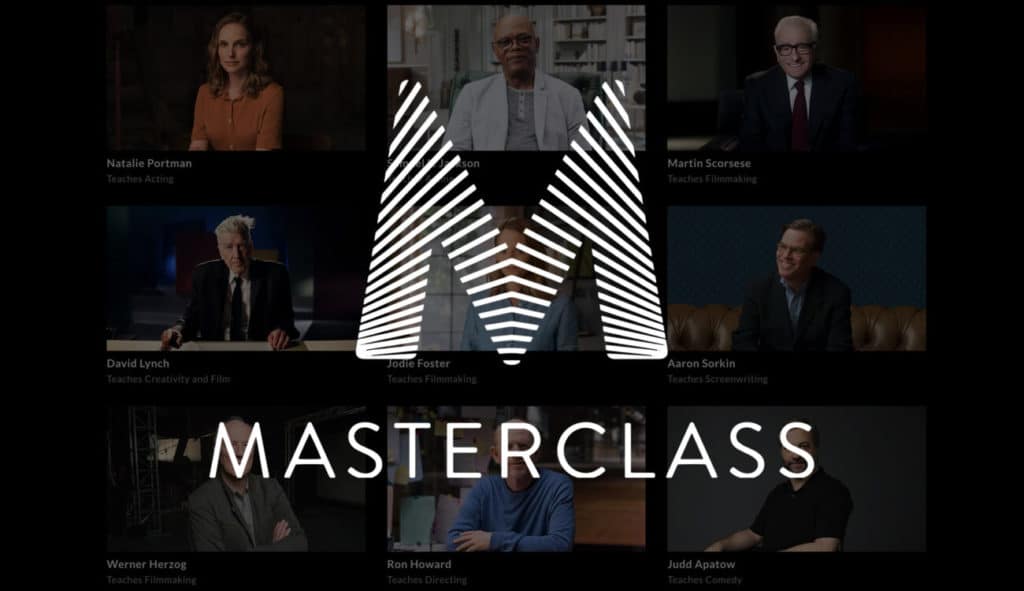


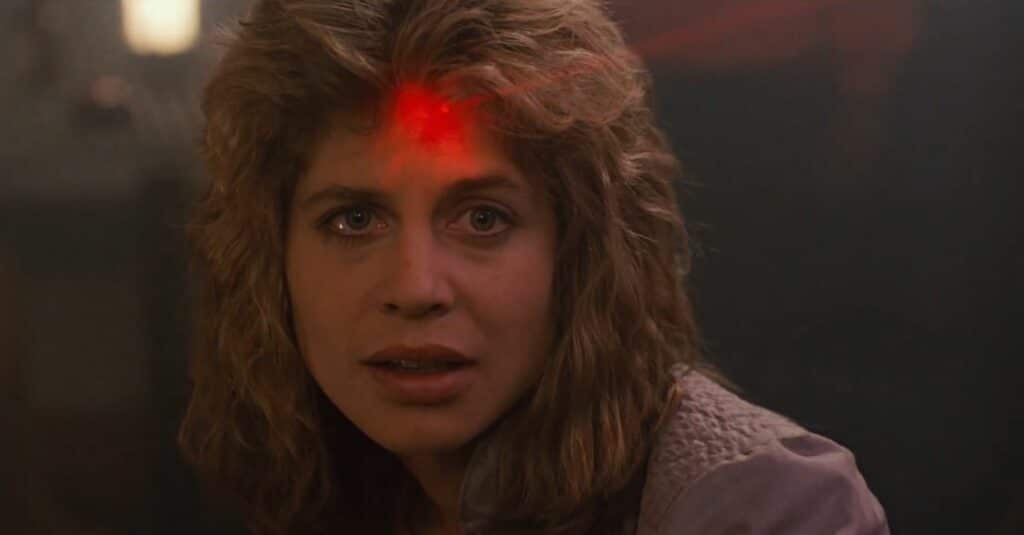
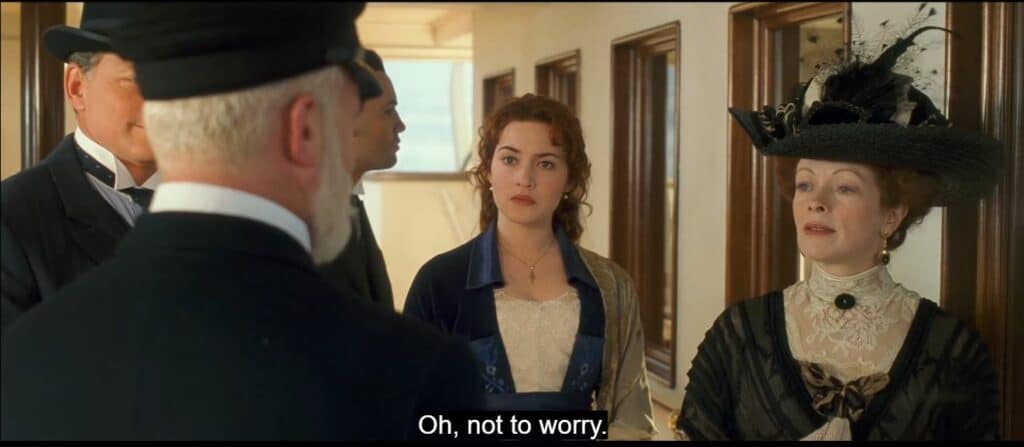

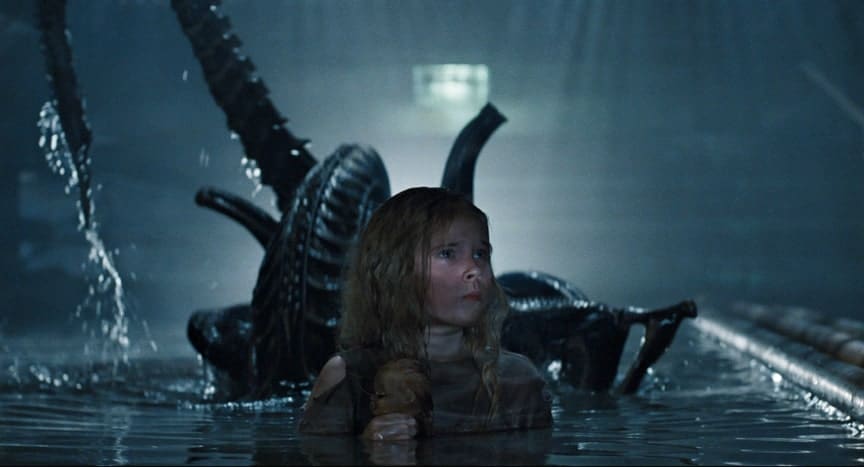
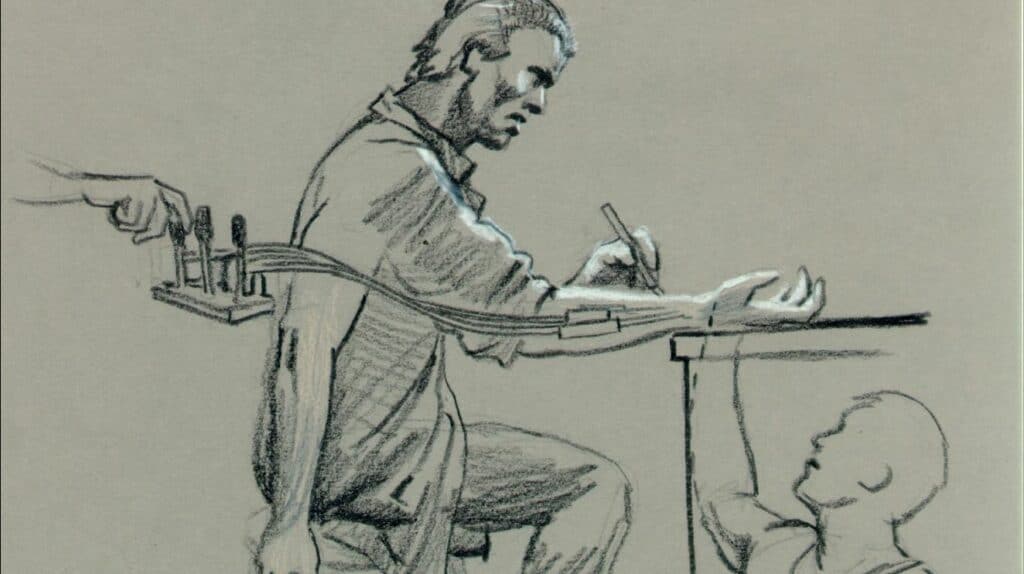
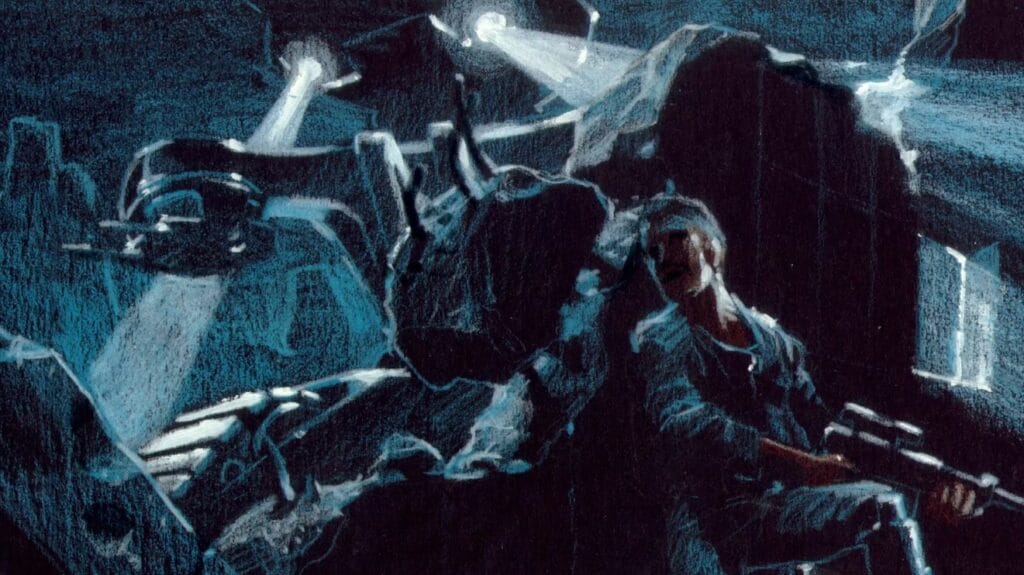



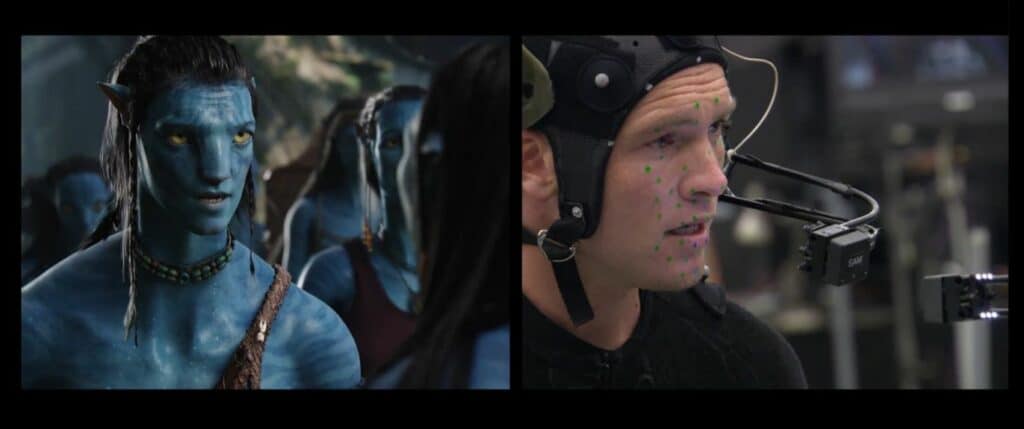
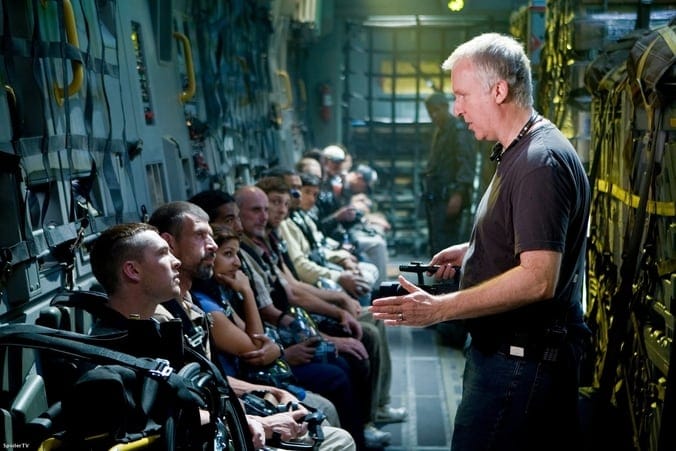
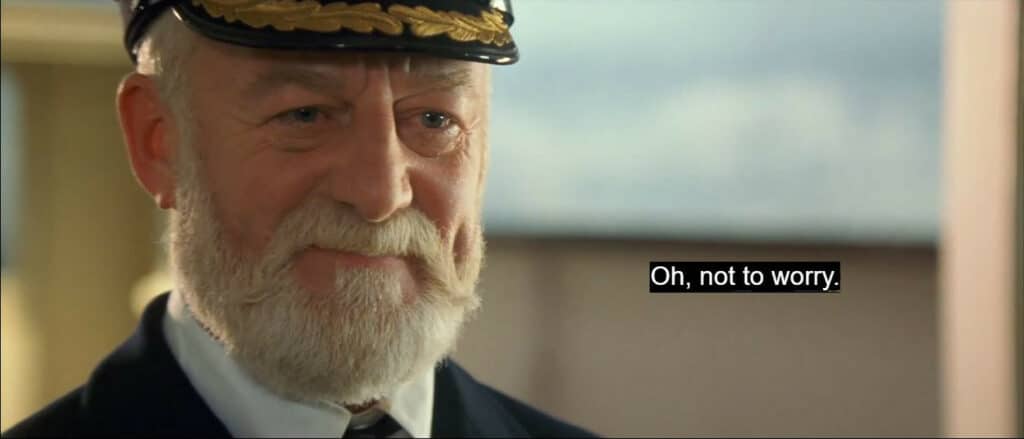
Hi industrialscripts.
I have much pleasure writing this email to you.
You guys are very talented and smart. Although I have met you just recently I have loved your project.
What a pleasure would it be working with you on scripts and article writing. I am new writer and I write poetry and stories about life in general. However I am not yet published in any form.
I very much appreciate your effort and time to send the email to me. Thank you so much for this information.
Best regards
Andrew kithure.
Glad you enjoyed this review Andrew!
I liked the Masterclass and recommend but was disappointed that he didn’t spend a little more time talking about how he created his female characters. “Strong women” Hollywood characters have become Mary Sue cliches, a mistake that Cameron has avoided for the last 40 years. It would’ve been helpful to know exactly how he approached writing Sarah Connor and Ellen Ripley to avoid creating the “strong women” character cliches.
Extremely good point, Marie. Sarah Connor and Ellen Ripley are arguably two of the most iconic female characters in film history with Connor, in particular, having one of the all-time-great character arcs (from bumbling waitress to teak-tough warrior). Check out our other article on extreme character arcs, here > https://industrialscripts.com/character-arcs/